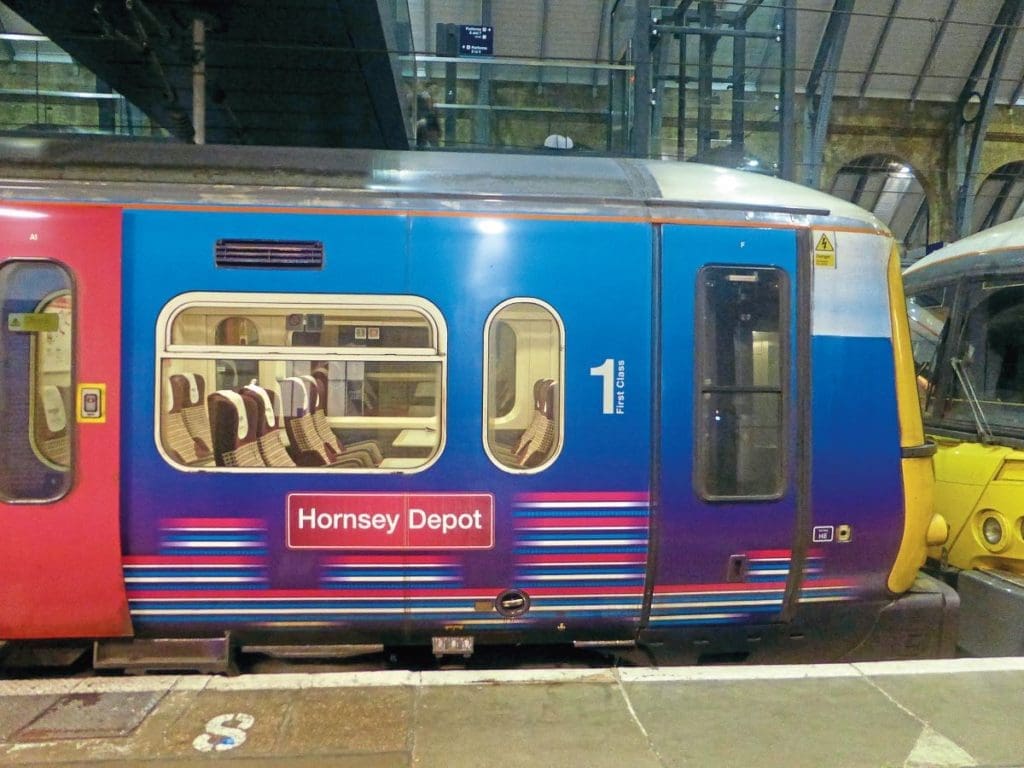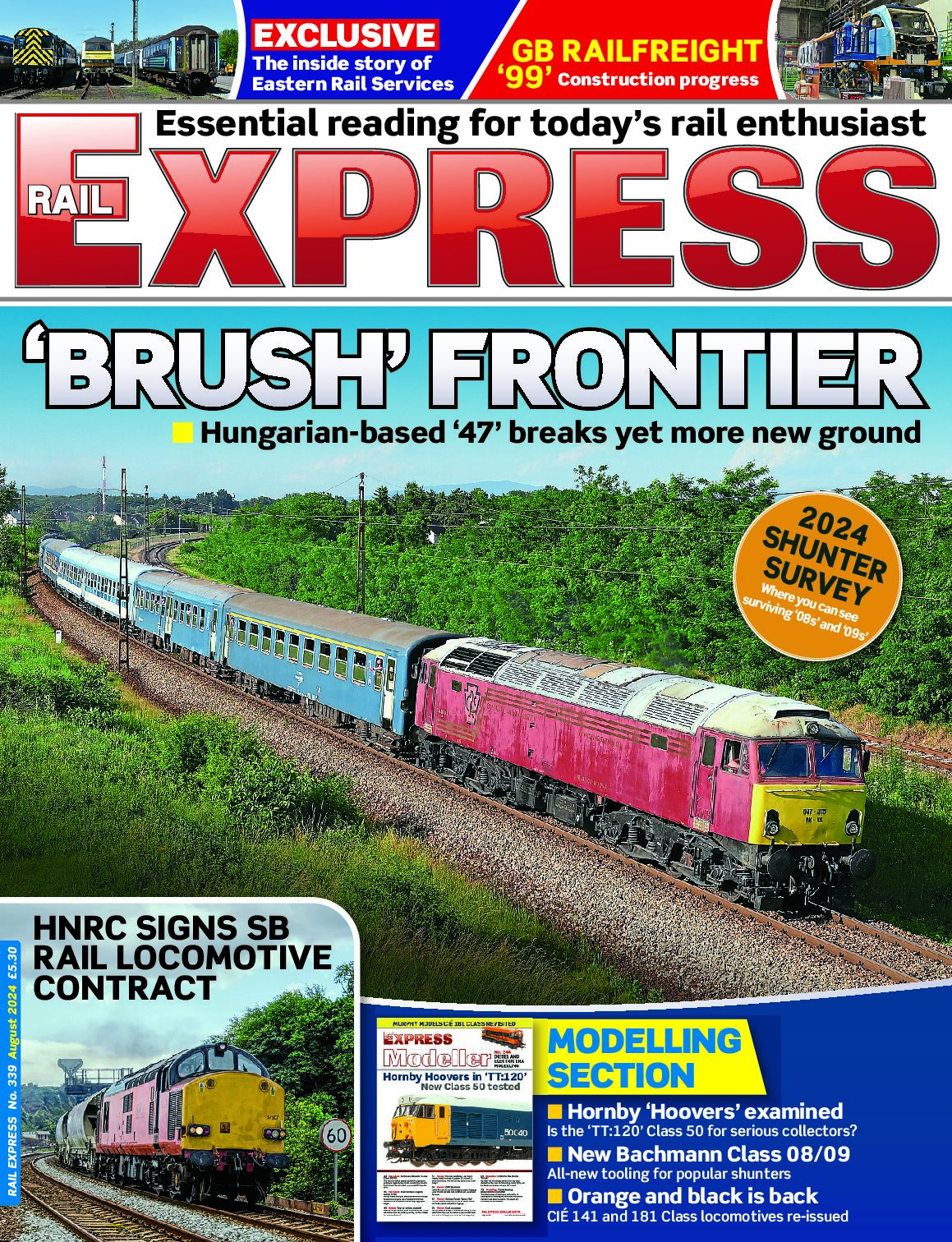May 2021 saw the withdrawal of the remaining active Class 365 units by Govia Thameslink Railway, and although there were hopes that they would find further use, disposal of the fleet began four months later. David Russell looks back at the history of the last units to be constructed at York Carriage Works.

The 1990s was a period of major change for Britain’s railways, with the privatisation of the network, which took place between 1994 and 1997. The extended sell-off period brought with it a number of issues, including slowness in the procurement of rolling stock. A proposed fleet for services on the Great Northern, LTS and Kent Coast routes, designated Class 371/471 and first proposed in 1991, had failed to materialise so, when a £150 million Government grant for the leasing of new rolling stock was announced in autumn 1992, attention was turned to using a modified version of the Class 465 Networker for long distance work instead.
A prototype ‘Networker Express’ was created by adapting an existing ‘465’, No. 465037. Two cars from the set had their 3+2 commuter seats replaced with 2+2 seats intended for longer distance use, and a first class section with 2+1 seating was added to the driving car. After display and evaluation at Waterloo, and gauging trials on the Great Northern, an order for 41 new dual voltage units was placed with ABB in October 1993. This comprised 16 sets for use on Kent Coast services, and 25 to operate on routes out of King’s Cross to Peterborough and Cambridge.
Enjoy more Rail Express Magazine reading every month.
Click here to subscribe & save.
The order for the 41 Class 365s provided a temporary lifeline for York Carriage Works, which, having delivered the last Class 166 ‘Turbo’ the previous month, had only the Class 465/1 build programme to complete. The construction of the ‘365s’ at York enabled the site to remain open until 1996.
The Class 365 order was a complex one as, rather being bought by BR, they were leased via the Royal Bank of Scotland and Abbey National. Upon privatisation, the lease was taken over by Eversholt, which effectively sub-leased the units to the Train Operating Companies. This arrangement would have an effect on the ownership of the units around 25 years later.
No. 365501 was unveiled at York Works in November 1994, the first of 16 sets (Nos. 365501-516) destined for use on third rail DC lines in the south east. Although built with pantographs, which enabled them to be tested on the East Coast Main Line between York and Peterborough, these were removed before the sets entered service. Testing began in April 1995, but just over a year later, in May 1996, only six examples (Nos. 365503/505-509) had reached Ashford Chart Leacon. Another set, No. 365512, had undergone trials on the Old Dalby test track. ABB Doncaster also carried out interior fitment work on some units.
By the time the sets entered traffic on services between London and Kent in October 1996, Connex had begun operating the South Eastern franchise. The ‘365’ fleet had been built and delivered in unbranded Network SouthEast livery, but the use of vinyls on the lower half of the bodyside and around the driver’s door saw the units transformed into a new colour scheme. The first working, operated by Nos. 365505/507, was the 08.30 Ramsgate-Victoria on October 14, although it was not until the following year that full introduction took place.
The Great Northern sets (Nos. 365517-541, which retained NSE livery) began operating out of King’s Cross on December 9, 1996, just four weeks before WAGN took over the franchise. The first few months of operation were not without problems – in April 1997, the fleet was grounded for several days, resulting in a number of Class 317s, which had been transferred to East Ham for use on LTS after the ‘365’ introduction, being returned to Hornsey for a few days.
In 2001, a programme of cab upgrades began on the Great Northern sets, changing their front end appearance with the fitting of cab air-conditioning. The new design later resulted in ScotRail referring to the units as its ‘Happy Trains’ in publicity.
Potters bar derailment
On May 10, 2002, No. 365526 was involved in a derailment at Potters Bar, caused by faulty pointwork. Seven people were killed when the rear coach of the set (DMS No. 65960), which was working the 1T60 12.45 King’s Cross-Kings Lynn, left the track and ended up on the station platform. The unit was held in quarantine for several years, initially at Crewe Works (although two cars spent a short time at Doncaster) and then Wolverton.
After the completion of the inquiry into the event, two cars were moved to RAF Spadeadam for tests, while No. 72290 was moved to Ilford where it was used for paint trials before being disposed of.
The loss of one of WAGN’s Class 365s resulted in a Connex set, No. 365502, being loaned to Hornsey between August 2002 and January 2003. The unit was refitted with a pantograph to enable it to be used on services out of King’s Cross.
The gradual introduction of Class 375 ‘Electrostars’ on the third rail network enabled the replacement of not only slam door EMUs but also the 16 Class 365s operated by Southeastern (as it had become when Connex lost the franchise in November 2003), and they were transferred to Hornsey to join Nos. 365517-25/27-41.

The first pair to be released, Nos. 365502/08, left Ramsgate by road in March 2004, being taken to Bombardier, Doncaster to be prepared for use by WAGN. Nos. 365501/06/07/15 followed by rail later in the month. Before entering traffic, the units were fitted with pantographs, had their shoegear removed, received cab upgrades and removal of Connex vinyls – which meant the units reverted to Network SouthEast livery after more than seven years! Nos. 365502/08 were the first to enter service, in the first half of April, with the remainder of the fleet following over the coming months.
It was not until September 2005 that the sets began to lose their NSE colours, when the first of four sets gained vinyls advertising attractions on the routes they served. No. 365531 had a theme of Nelson and Norfolk, and Nos. 365510/19/40 were similarly treated over the next few months. The following year, the WAGN franchise was taken over by First Group (using the First Capital Connect name) and the remaining 36 sets had acquired their new operator’s colours by late 2007.

Govia Thameslink Railway took over from First Group in September 2014, when a large franchise entitled Thameslink, Southern & Great Northern was created in advance of the introduction of through trains from the south coast to Peterborough and Cambridge. The expansion of the Thameslink network, together with the decision to transfer ‘Electrostar’ Nos. 387101-29 to Hornsey for use on Great Northern services, rather than to GWR as planned, meant that, by late 2017, the ‘365’ fleet was largely relegated to peak hour operation. Furthermore, an additional ‘Electrostar’ order meant that a proposed move of some Class 365s to GWR for Thames Valley services was binned.
The fleet rundown began in November 2017, when three sets were placed in warm store at Peterborough. Formal handback of around half the fleet (the odd numbered sets) to Eversholt began in February 2018, when the first four units were sent away to Ely for storage, with further examples following over the next few months.

Reprieve – Thanks to Scotrail
The timing of Class 365 going off-lease was very fortunate for another TOC, ScotRail, which was suffering problems with its new Class 385s, delaying their introduction. To provide an interim solution, 10 ‘365s’ were transferred north for use on services between Edinburgh and Glasgow/Dunblane. The first set arrived on April 21, 2018, and they began operating between the two Scottish cities on June 23.
The 10 sets in Scotland remained in service until March 2019, after which they were sent to Crewe South Yard for storage. By this time, the other sets which had been at Ely had also been moved to Crewe. One set, No. 365525, was sent to Longsight for work in connection with the fitting of ECTS, after which it was taken to Bicester for storage, prior to being disposed of in March this year.
2019 also saw a change in ownership of the units – as part of the arrangement put in place when they were financed back in 1993, they passed to the Department for Transport, which had set up a company, Train Fleet (2019) Ltd. However, they reverted back to Eversholt ownership in 2021.
The Covid-19 pandemic saw a reduction in timetabled services, particularly in peak hours, reflecting depressed passenger numbers, reducing the need for the Class 365s. This was further diminished with the arrival of some Gatwick Express Class 387/2s, and in the early part of 2021, GTR announced that it would be dispensing with its ‘365s’ after the May 2021 timetable change.

Unlike the final timetabled workings of HSTs on the Midland Main Line which occurred on the same day, the demise of the Class 365 fleet was a much quieter affair. Although the last commuter service out of King’s Cross on May 14 to use ‘365’ traction carried a headboard, there was no fanfare when Nos. 365520/522 arrived with the 1P85 09.10 ex-Peterborough the next morning and the pair of units simply departed for Hornsey after undertaking what turned out to be the final passenger working for the class.
Most of the units withdrawn in 2021 were sent to Doncaster Belmont Yard for storage. Despite a couple of proposals for further use, nothing came to fruition, and in September 2021, disposal of the fleet began, with two sets being sent to CF Booth at Rotherham for disposal, with further units heading to Sims in Newport soon after. Over the next seven months, the remaining sets at Crewe and Doncaster were sent for scrap (see table – right), although, thanks to the efforts of Howard Johnston, three vehicles were saved for preservation and can now be found at the East Kent Railway.












